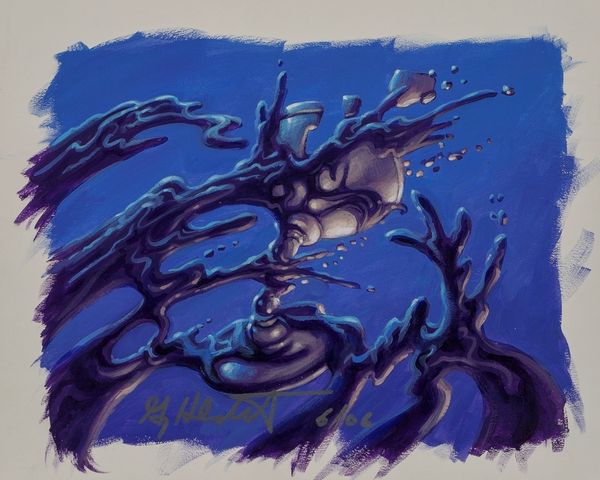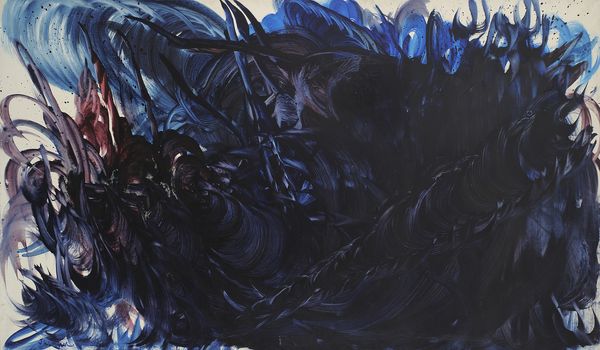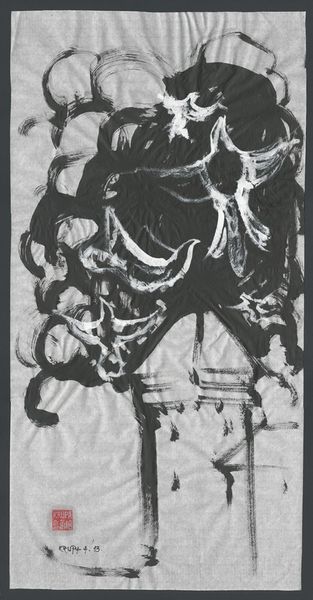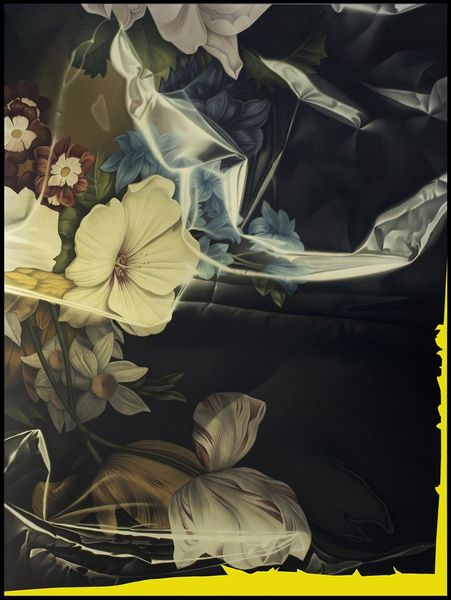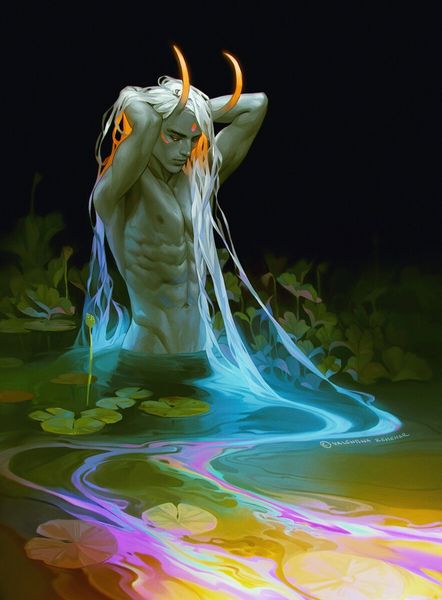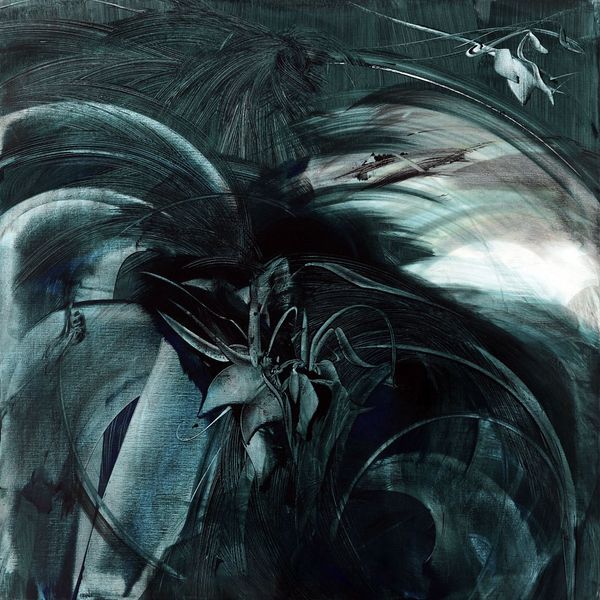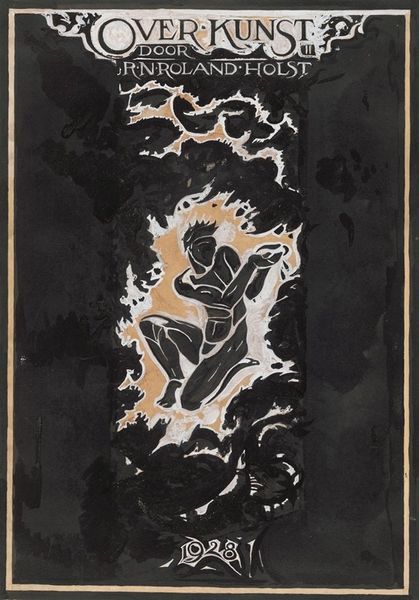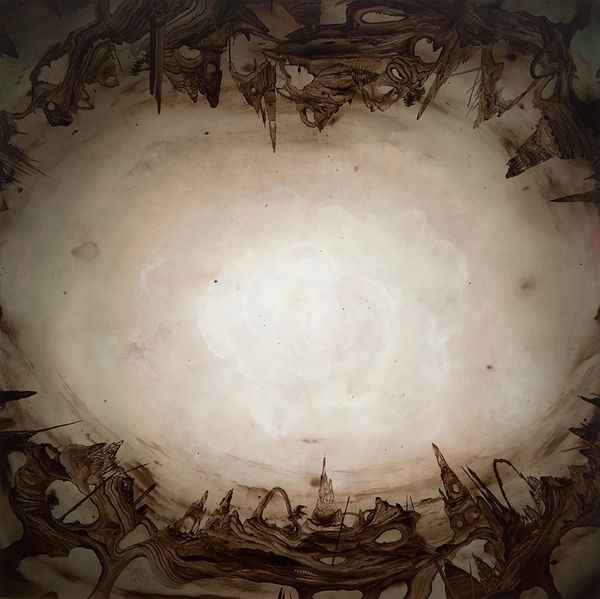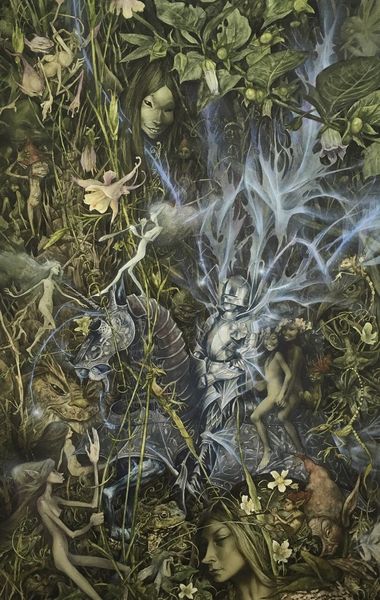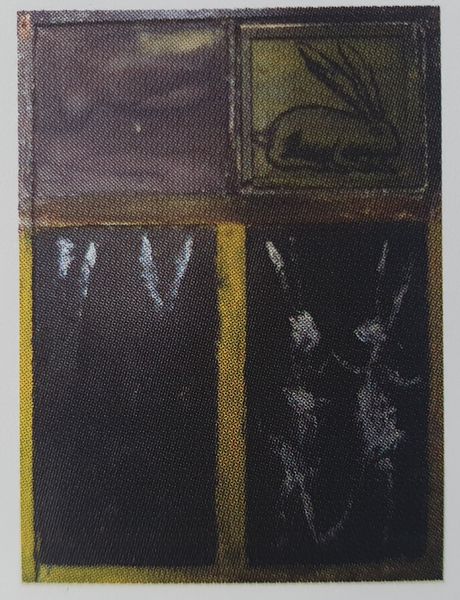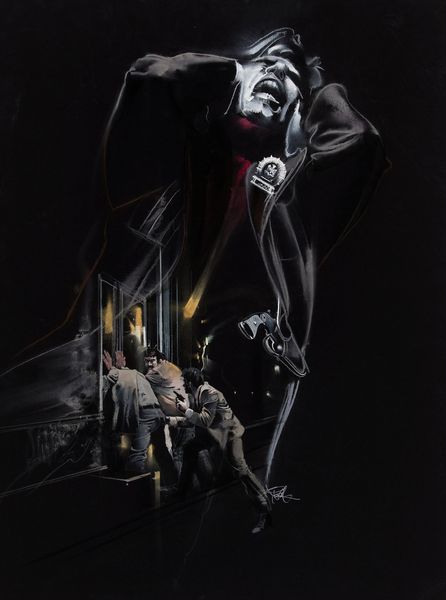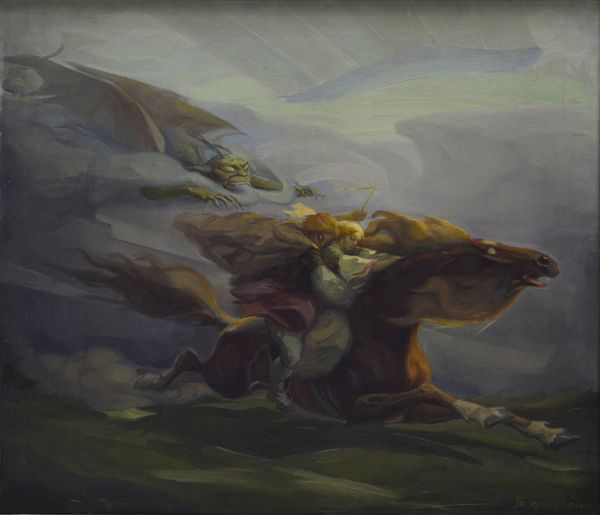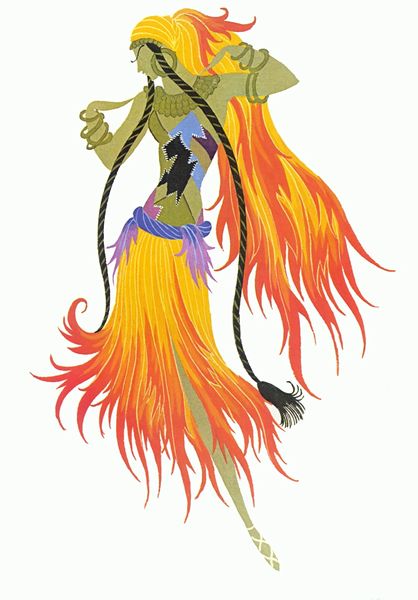
painting, oil-paint
#
portrait
#
painting
#
oil-paint
#
acrylic on canvas
#
realism
Copyright: Modern Artists: Artvee
Editor: So this is Rose Freymuth-Frazier’s 2020 oil painting, "Evening Becomes Her," and right away, I’m struck by how the darkness makes the bright yellow details almost glow. It's moody and dramatic. What do you see in this piece? Curator: What strikes me is the deliberate choice of portraying the flower in near darkness. Think about the historical context: flower painting, particularly in the Dutch Golden Age, often signified wealth, leisure, and even moral virtues when the paintings contained multiple blooms. The single dark iris, nearly engulfed, disrupts this history. Editor: That’s fascinating! So, it's almost like a commentary on that earlier tradition, perhaps? Curator: Precisely! And consider how public funding, particularly from institutions promoting "high art", can subtly dictate what's valued and shown. An artwork with a subdued, even melancholic, flower asks the public to perhaps consider a different message: that beauty exists even within shadows and complexity. How might the museum space, historically a symbol of societal norms and elitism, challenge these assumptions when displaying this work? Editor: It feels almost subversive. I hadn't considered the painting in light of who or what might usually be on display. Curator: It pushes back. It compels us to rethink what art institutions validate. It could ask a profound question: should galleries strive to display more images that connect to life's quieter moments and less idealized realities? Editor: It really does make you consider whose voice is usually elevated, doesn’t it? This gave me a whole new perspective. Curator: It’s through considering that conversation about institutions and accessibility that these images truly start to bloom.
Comments
No comments
Be the first to comment and join the conversation on the ultimate creative platform.
